Wells report finds it likely Patriots deflated balls, Brady knew about it
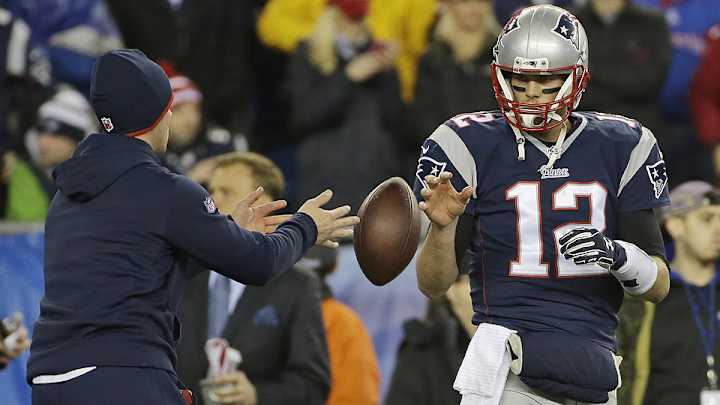
After months of interviews, investigator Ted Wells, acting on behalf of the NFL, has released a 139-page report which indicates that in the Patriots' 45–7 AFC Championship Game win over the Colts, Patriots personnel intentionally deflated footballs to provide an advantage to quarterback Tom Brady. In addition, the Wells report indicates that Brady, who has denied all knowledge of any alleged deflation, likely knew about the tactic.
The uproar began shortly after New England's win, when Indianapolis reporter Bob Kravitz revealed via Twitter that the league was investigating the balls used by the Patriots in the game, and that 11 of the balls were deemed to have less than the required air pressure. Wells was hired on Jan. 23 to investigate the matter; he had previously headed the investigation into the Dolphins' bullying scandal. Wells spoke with members of the Colts and Patriots organizations, game officials, members of the NFLPA, NFL Referees' Association and Wilson, the company that manufactures the footballs used by the NFL, and several scientific testing organizations.
NFL players react to release of Deflategate report
Reading through the entire report is an exercise in tedium at times, but here are the quoted highlights:
• "We have concluded that it is more probable than not that Jim McNally (the Officials Locker Room attendant for the Patriots) and John Jastremski (an equipment assistant for the Patriots) participated in a deliberate effort to release air from Patriots game balls after the balls were examined by the referee."
• "Based on the evidence, it also is our view that it is more probable than not that Tom Brady (the quarterback for the Patriots) was at least generally aware of the inappropriate activities of McNally and Jastremski involving the release of air from Patriots game balls."
• "We do not believe that the evidence establishes that any other Patriots personnel participated in or had knowledge of the violation of the Playing Rules or the deliberate effort to circumvent the rules described in this Report. In particular, we do not believe there was any wrongdoing or knowledge of wrongdoing by Patriots ownership, Patriots Head Coach Bill Belichick or any other Patriots coach in the matters investigated. We also do not believe there was any wrongdoing or knowledge of wrongdoing by Patriots Head Equipment Manager Dave Schoenfeld."
The report then specified the alleged shenanigans employed by McNally and Jastremski.
Patriots staffers' texts from Deflategate probe take shot at Brady
• "McNally told the referee, Walt Anderson, that Tom Brady, the Patriots quarterback, wanted the game balls inflated at 12.5 psi.
McNally has been employed by the Patriots as a seasonal or part-time employee for the past 32 years... During the pre-game inspection, Anderson determined that all but two of the Patriots game balls delivered by McNally were properly inflated. Most of them measured 12.5 psi. Two tested below 12.5 psi and Anderson directed another game official to further inflate those two game balls, which Anderson then adjusted to 12.5 psi using a pressure gauge. Most of the Colts game balls tested by Anderson prior to the game measured 13.0 or 13.1 psi."
• "When Anderson and other members of the officiating crew were preparing to leave the Officials Locker Room to head to the field for the start of the game, the game balls could not be located. It was the first time in Anderson's 19 years as an NFL official that he could not locate the game balls at the start of a game. Unknown to Anderson, and without Anderson's permission or the permission of any other member of the officiating crew, McNally had taken the balls from the Officials Locker Room towards the playing field. According to Anderson and other members of the officiating crew for the AFC Championship Game, the removal of the game balls from the Officials Locker Room by McNally without the permission of the referee or another game official was a breach of standard operating pre-game procedure. According to Anderson, other members of the officiating crew for the AFC Championship Game and other game officials with recent experience at Gillette Stadium, McNally had not previously removed game balls from the Officials Locker Room and taken them to the field without either receiving permission from the game officials or being accompanied by one or more officials."
And the crucial conclusions of the investigation's attempt to find exactly how the footballs were altered:
• "Based on videotape evidence and witness interviews, it has been determined that McNally removed the game balls from the Officials Locker Room at approximately 6:30 p.m. After leaving the Officials Locker Room carrying two large bags of game balls (Patriots balls and Colts balls), McNally turned left and then turned left again to walk down a corridor referred to by Patriots personnel as the "center tunnel" heading to the playing field. At the end of the center tunnel on the left-hand side, approximately three feet from the doors that lead to the playing field, is a bathroom. McNally entered that bathroom with the game balls, locked the door, and remained in the bathroom with the game balls for approximately one minute and forty seconds. He then left the bathroom and took the bags of game balls to the field."
The report doesn't implicate Brady as a co-conspirator but does say in fairly strong language that Brady was aware of the deflation practice.
SI's complete coverage of Deflategate
"Our conclusions with respect to Tom Brady also are based on an analysis of the substantial and credible evidence. The evidence does not allow us to reach conclusions as to when McNally and Jastremski began their efforts to release air from Patriots game balls on game day (although McNally referred to himself as "the deflator" prior to the start of the 2014-15 season), exactly how long those efforts have been ongoing, how frequently they occurred, how the idea originated or the full scope of communications related to those efforts. We also note that there is less direct evidence linking Brady to tampering activities than either McNally or Jastremski. We nevertheless believe, based on the totality of the evidence, that it is more probable than not that Brady was at least generally aware of the inappropriate activities of McNally and Jastremski involving the release of air from Patriots game balls. Evidence of Brady's awareness appears in text communications between McNally and Jastremski."
Brady, coach Bill Belichick and team owner Robert Kraft have denied wrongdoing or knowledge of wrongdoing. At the same time the report was released to the public Wednesday, Kraft released his own strongly-worded statement.
When I addressed the media at the Super Bowl on January 26 – over 14 weeks ago – I stated that I unconditionally believed that the New England Patriots had done nothing inappropriate in this process or in violation of the NFL rules and that I was disappointed in the way the league handled the initial investigation. That sentiment has not changed.
I was convinced that Ted Wells’ investigation would find the same factual evidence supported by both scientific formula and independent research as we did and would ultimately exonerate the Patriots. Based on the explanations I have heard and the studies that have been done, I don’t know how the science of atmospheric conditions can be refuted or how conclusions to the contrary can be drawn without some definitive evidence.
What is not highlighted in the text of the report is that three of the Colts’ four footballs measured by at least one official were under the required psi level. As far as we are aware, there is no comparable data available from any other game because, in the history of the NFL, psi levels of footballs have never been measured at halftime, in any climate. If they had been, based on what we now know, it is safe to assume that every cold-weather game was played with under inflated footballs. As compelling a case as the Wells Report may try to make, I am going to rely on the factual evidence of numerous scientists and engineers rather than inferences from circumstantial evidence.
Throughout the process of this nearly four-month investigation, we have cooperated and patiently awaited its outcome. To say we are disappointed in its findings, which do not include any incontrovertible or hard evidence of deliberate deflation of footballs at the AFC Championship Game, would be a gross understatement. In addition, given our level of cooperation throughout the process, I was offended by the comments made in the Wells Report in reference to not making an individual available for a follow-up interview. What the report fails to mention is that he had already been interviewed four times and we felt the fifth request for access was excessive for a part-time game day employee who has a full-time job with another employer.
While I respect the independent process of the investigation, the time, effort and resources expended to reach this conclusion are incomprehensible to me. Knowing that there is no real recourse available, fighting the league and extending this debate would prove to be futile. We understand and greatly respect the responsibility of being one of 32 in this league and, on that basis, we will accept the findings of the report and take the appropriate actions based on those findings as well as any discipline levied by the league.
"I was shocked to learn of the news reports about the footballs," Belichick said on Jan. 22. "I had no knowledge whatsoever of this situation until Monday morning. I would say I’ve learned a lot more about this process in the last three days than I knew or have talked about it in the last 40 years that I have coached in this league. I had no knowledge of the various steps involved in the game balls and the process that happened between when they were prepared and went to the officials and went to the game. So, I’ve learned a lot about that. I obviously understand that each team has the opportunity to prepare the balls the way they want, give them to the officials and the game officials either approve or disapprove the balls. That really was the end of it for me until I learned a little bit more about this the last couple days."
Brady first answered questions about it that same day.
"I didn’t have any—I didn’t alter the ball in any way," he said. "I have a process that I go through before every game where I go in and I pick the footballs that I want to use for the game. Our equipment guys do a great job of breaking the balls in. They have a process that they go through. When I pick those balls out, at that point, to me, they’re perfect. I don’t want anyone touching the balls after that. I don’t want anyone rubbing them, putting any air in them, taking any air out. To me those balls are perfect and that’s what I expect when I show up on the field. That happened obviously on Sunday night. It was the same process that I always go through."
In a statement released along with the report in the NFL Communications site, league Commissioner Roger Goodell thanked Wells and his colleagues for their work and said that executive vice president of football operations Troy Vincent "will consider what steps to take in light of the report, both with respect to possible disciplinary action and to any changes in protocols that are necessary to avoid future incidents of this type."
GALLERY: THE MOST TALKED-ABOUT FOOTBALLS IN NFL HISTORY
The Most Talked-About Footballs in NFL History
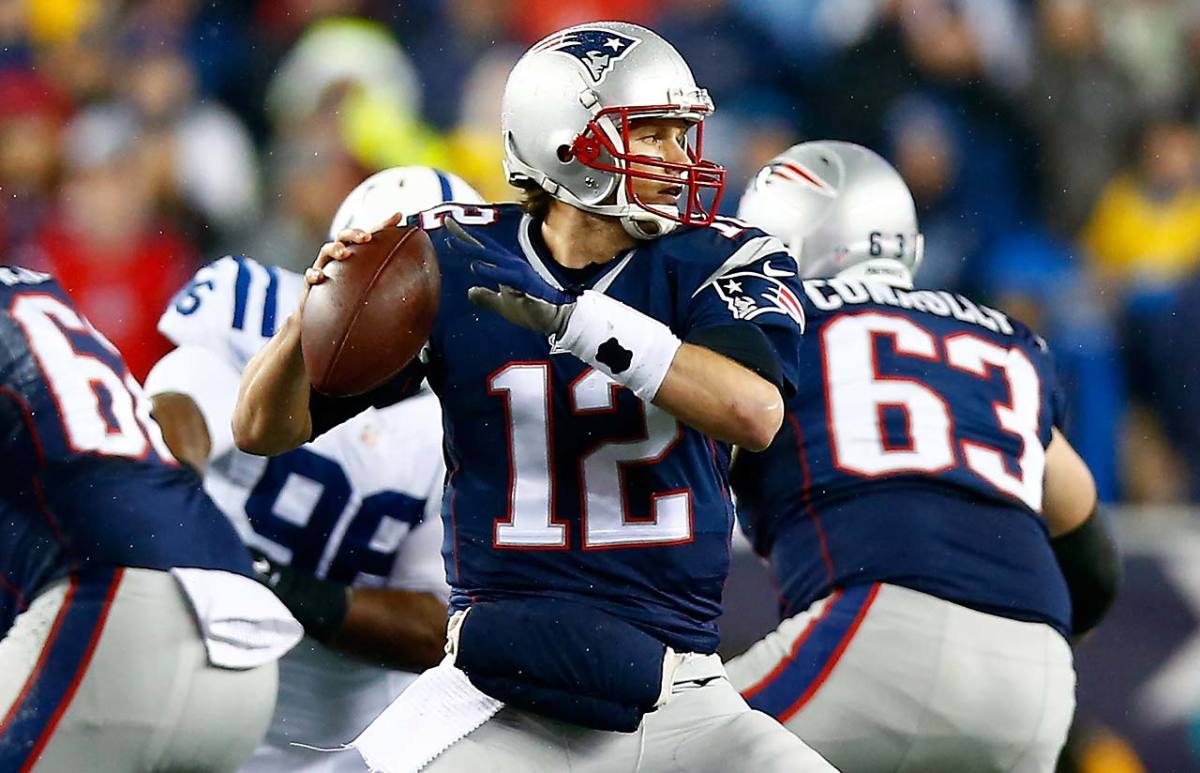
With the NFL investigation into Deflategate concluding that it is probable the Patriots deliberately deflated footballs and that Tom Brady was "generally aware," here is a gallery of the most talked-about footballs in NFL history, beginning with Brady looking to pass in the first quarter against the Indianapolis Colts.
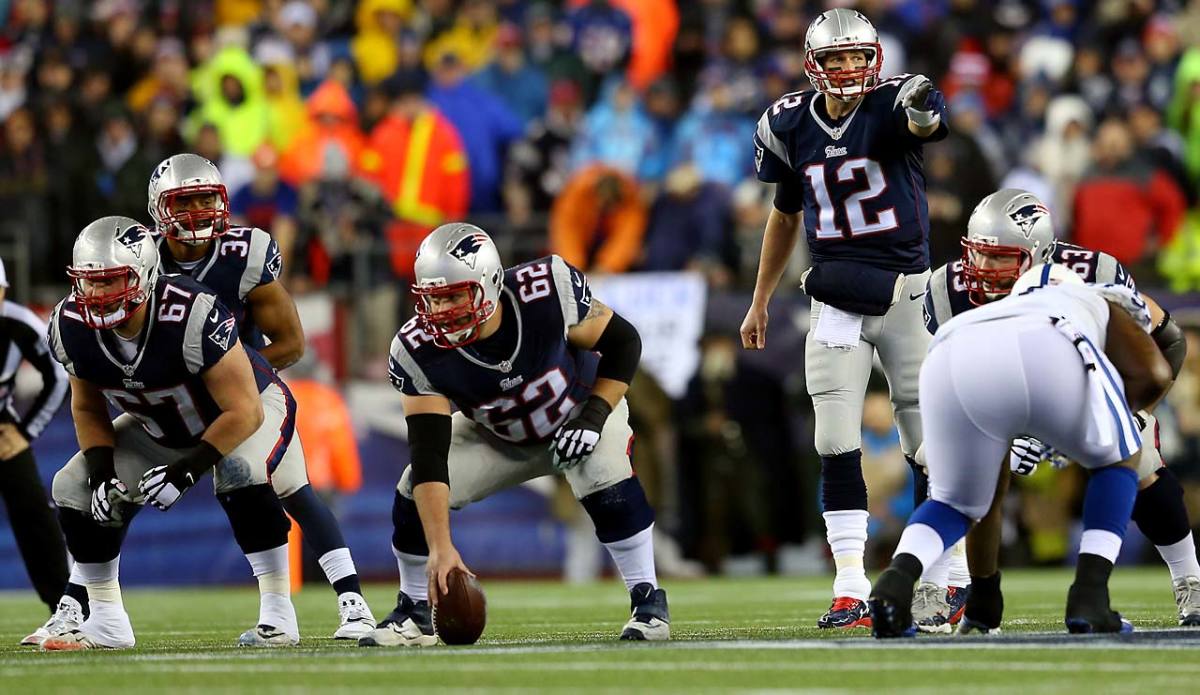
Tom Brady gestures before the snap in the first quarter against the Indianapolis Colts.
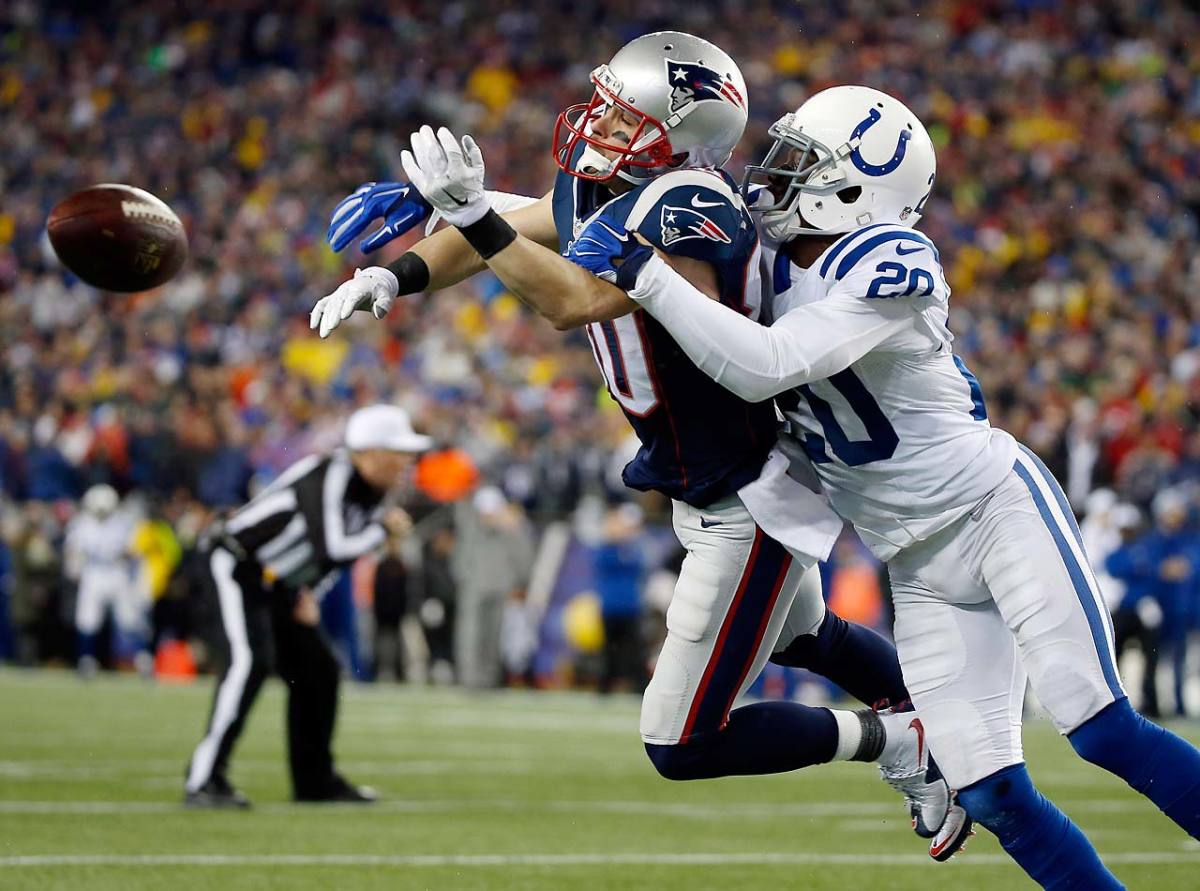
Patriots wide receiver Danny Amendola cannot catch a pass while being defended by Darius Butler during the first half.
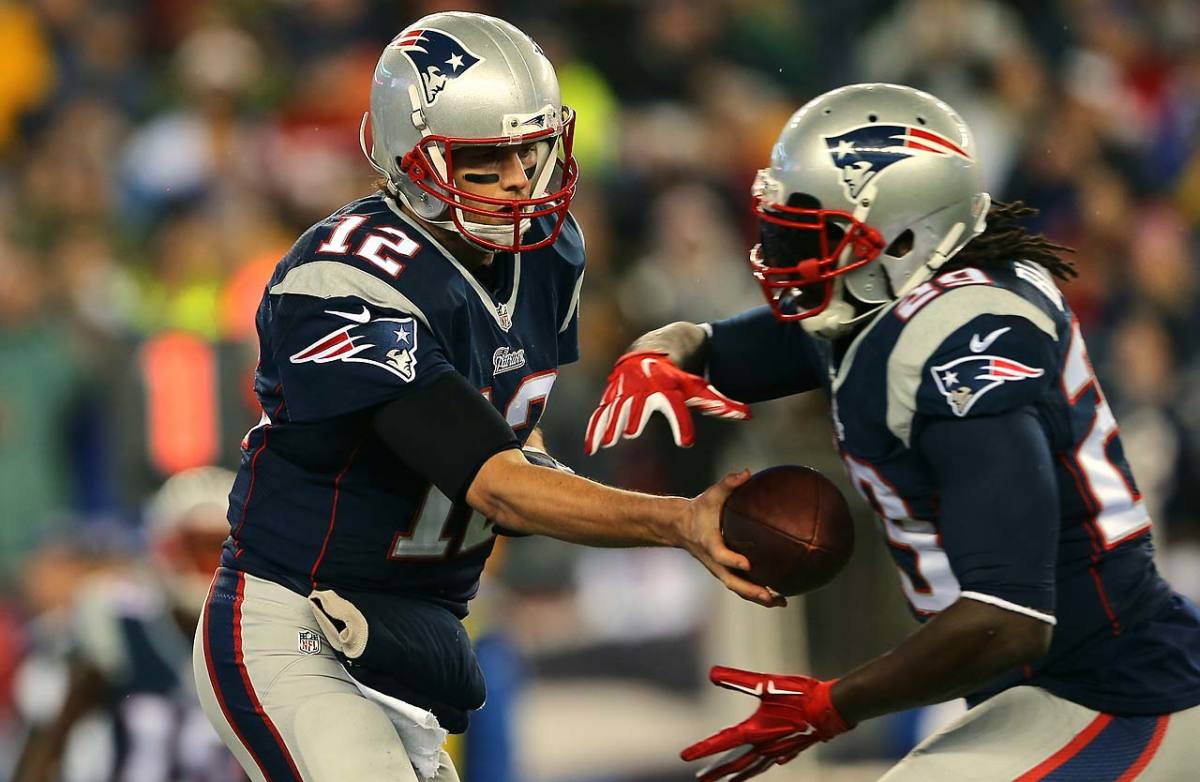
Tom Brady hands the ball off to LeGarrette Blount in the first quarter.
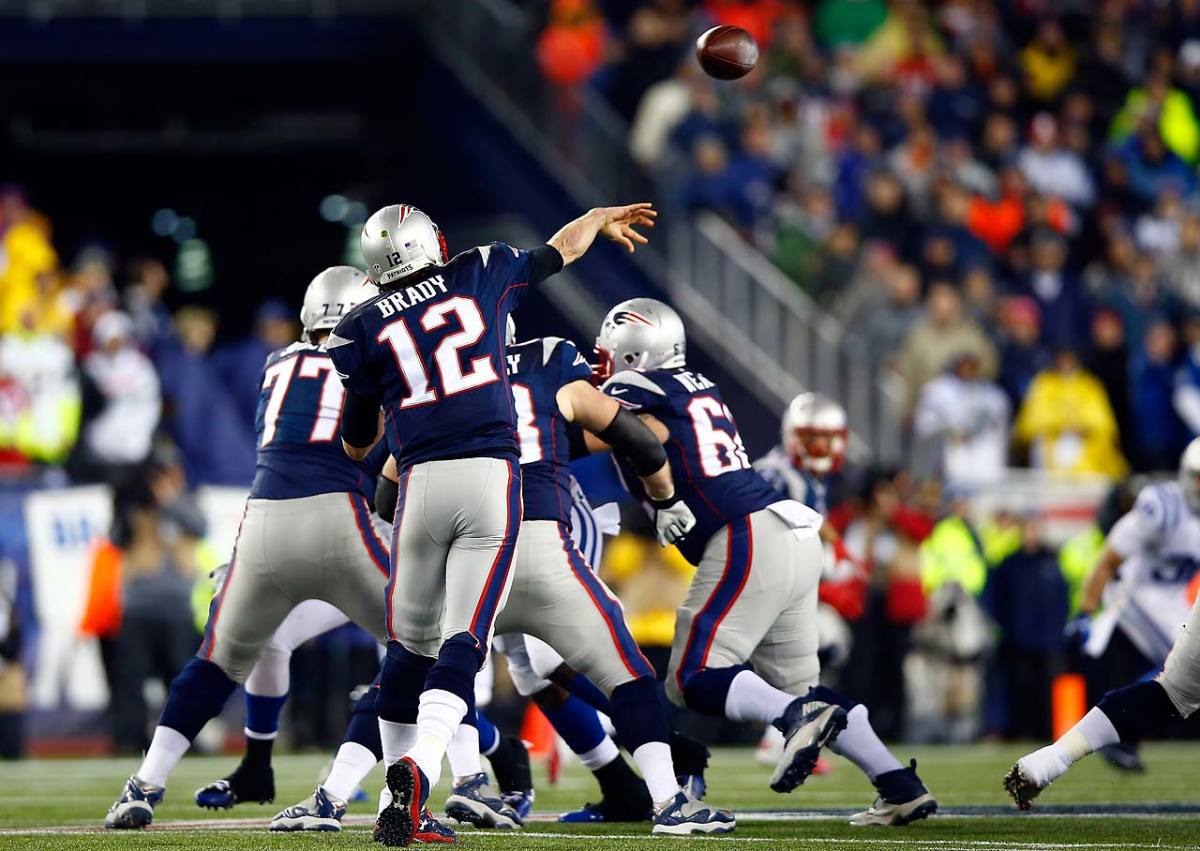
Tom Brady throws a pass in the first quarter.
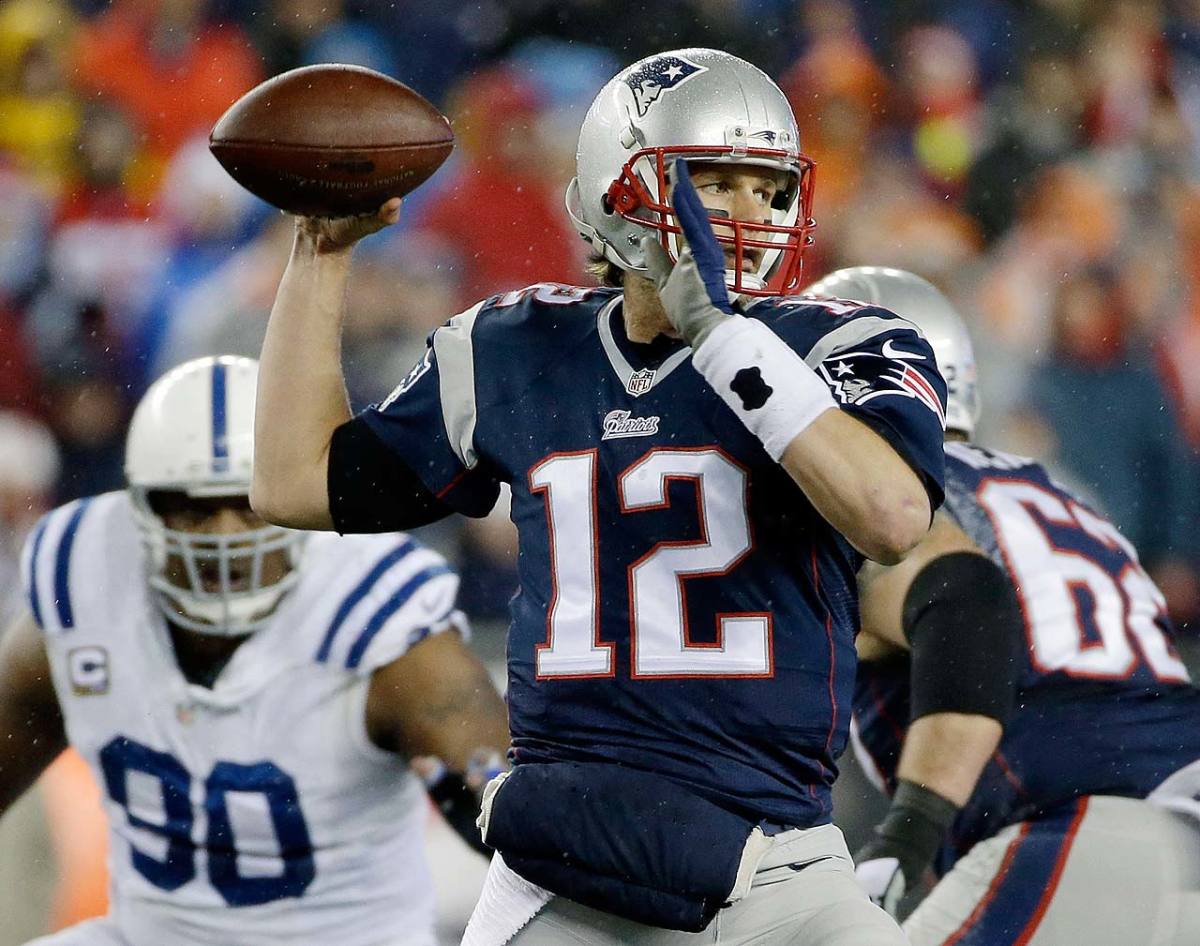
Tom Brady looks to pass during the first half.
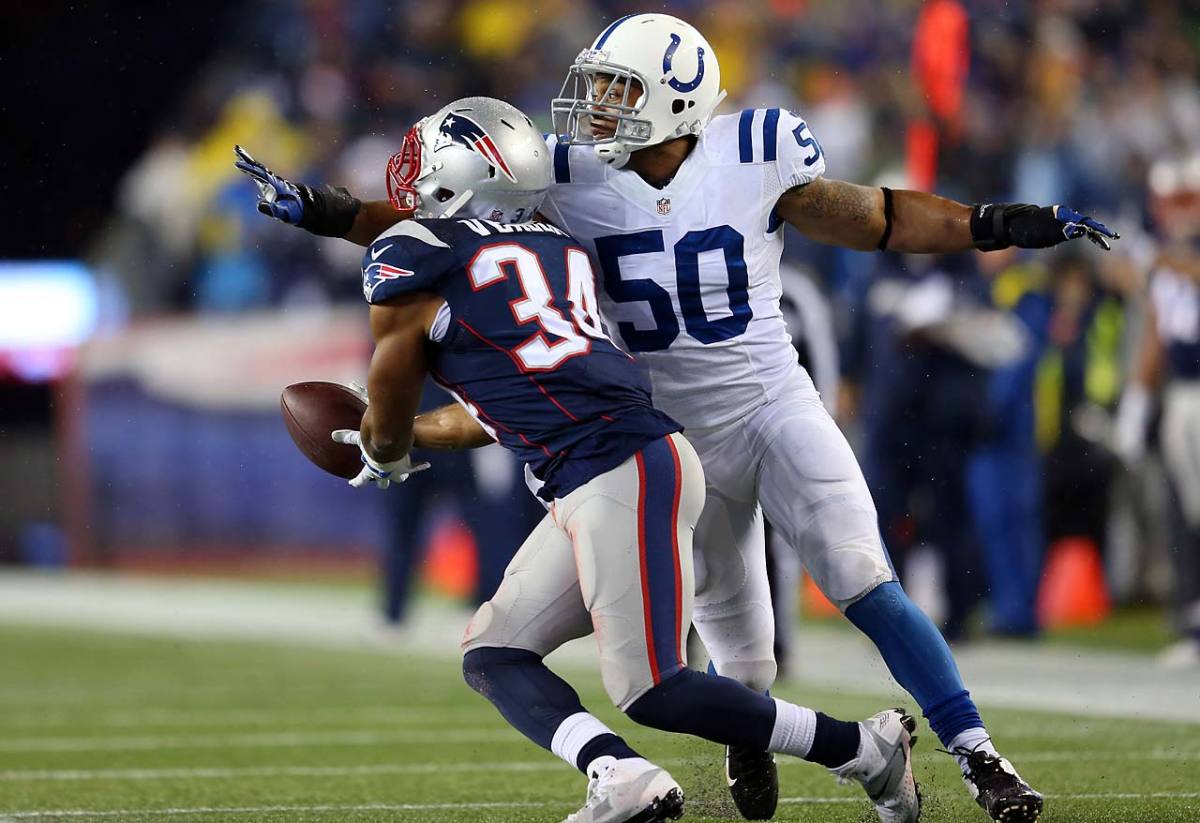
Shane Vereen makes a catch in the first quarter against Jerrell Freeman.
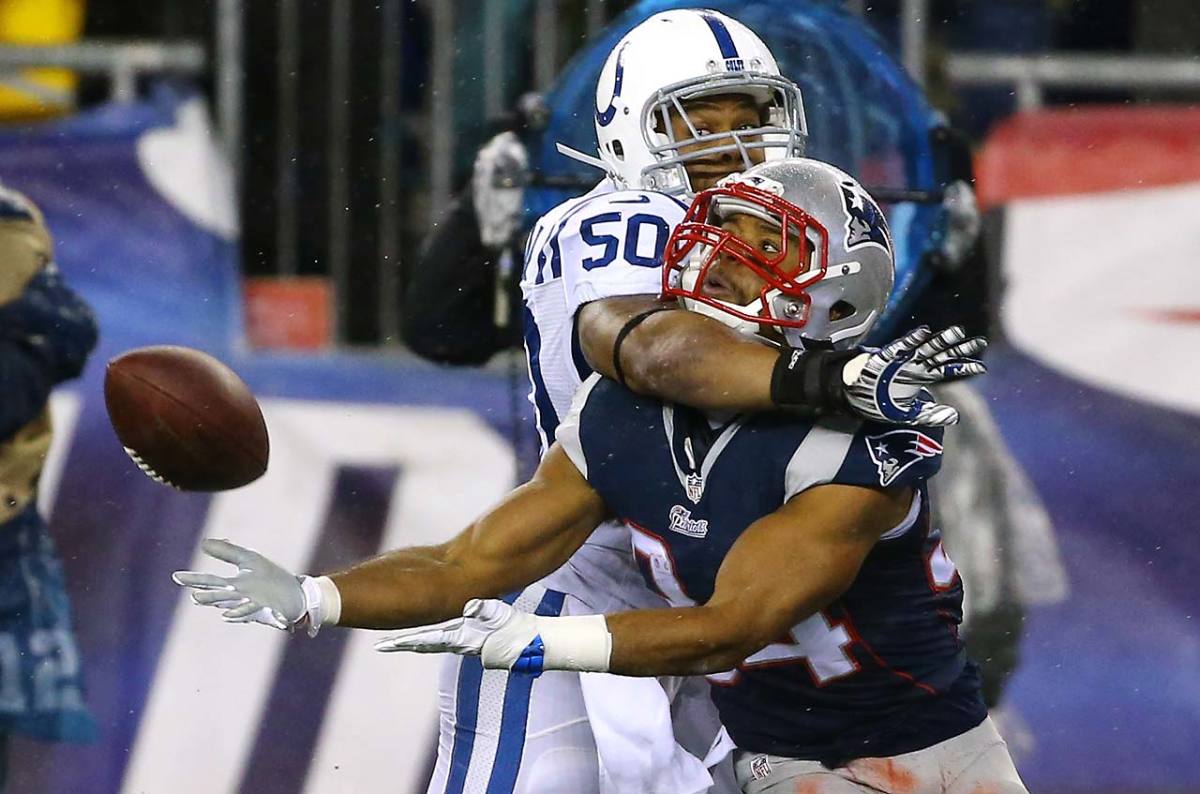
Shane Vereen makes a catch in the first quarter against Jerrell Freeman.
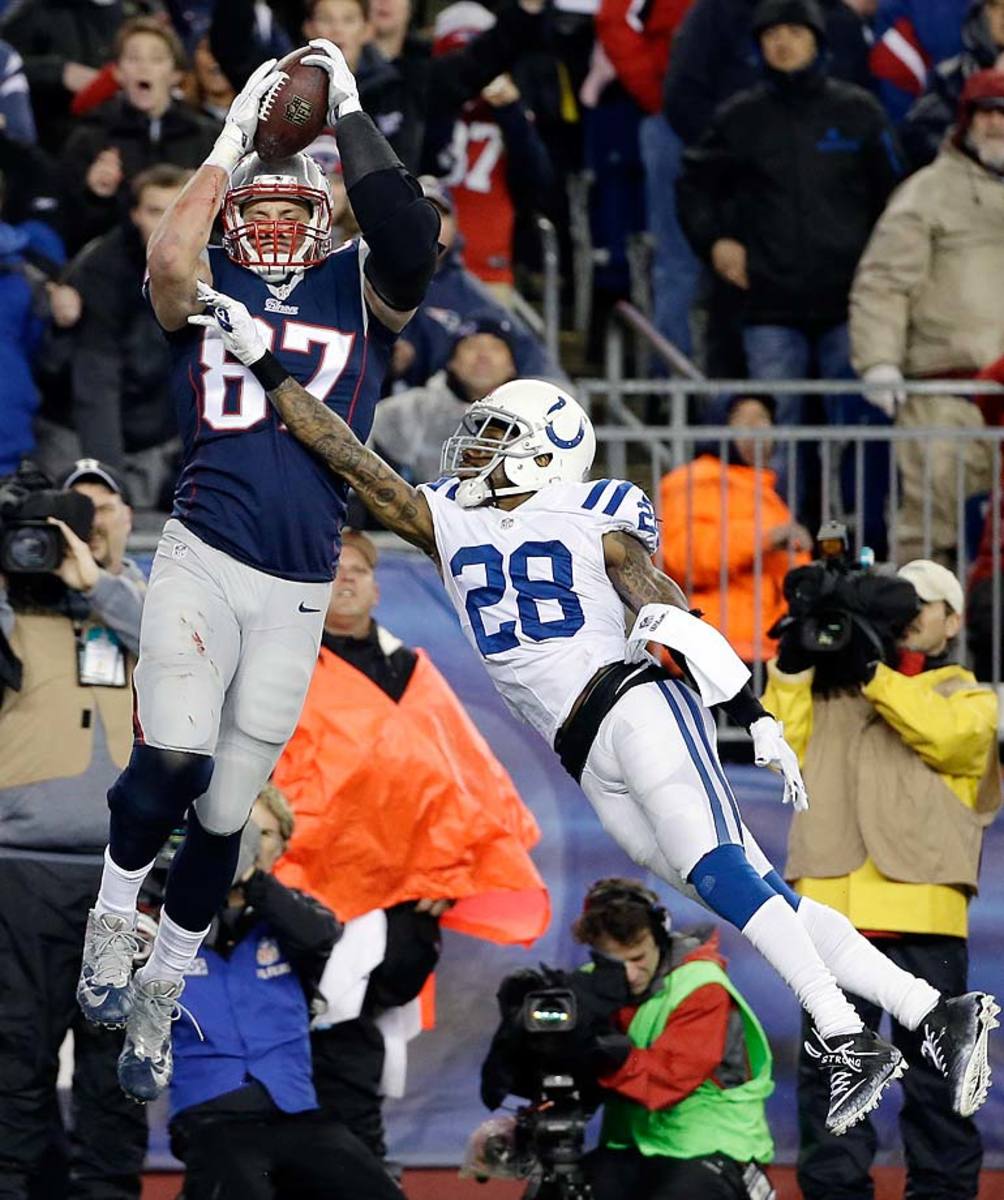
Rob Gronkowski cannot make a catch in the end zone over Colts cornerback Greg Toler during the first half.
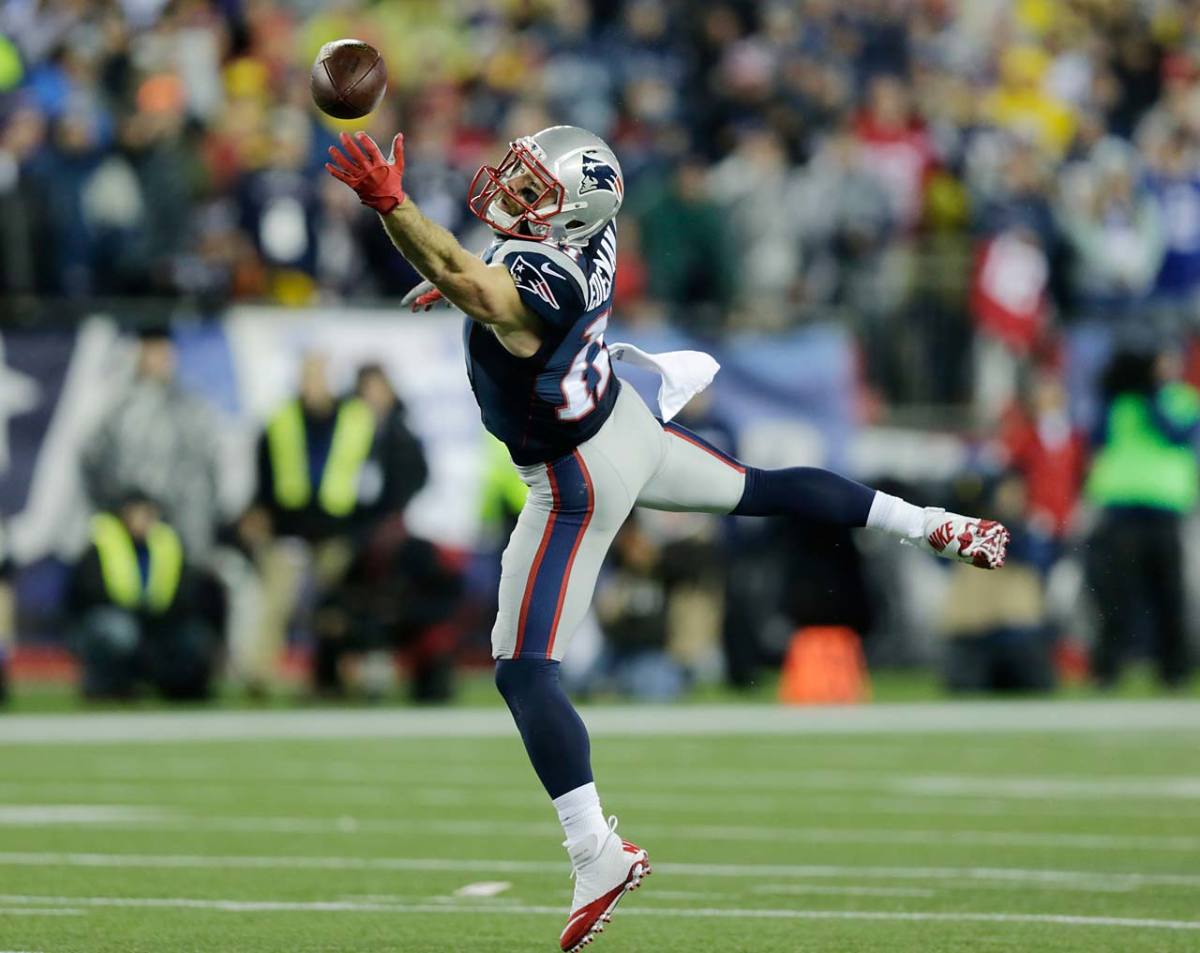
Julian Edelman tries to make a catch during the first half.
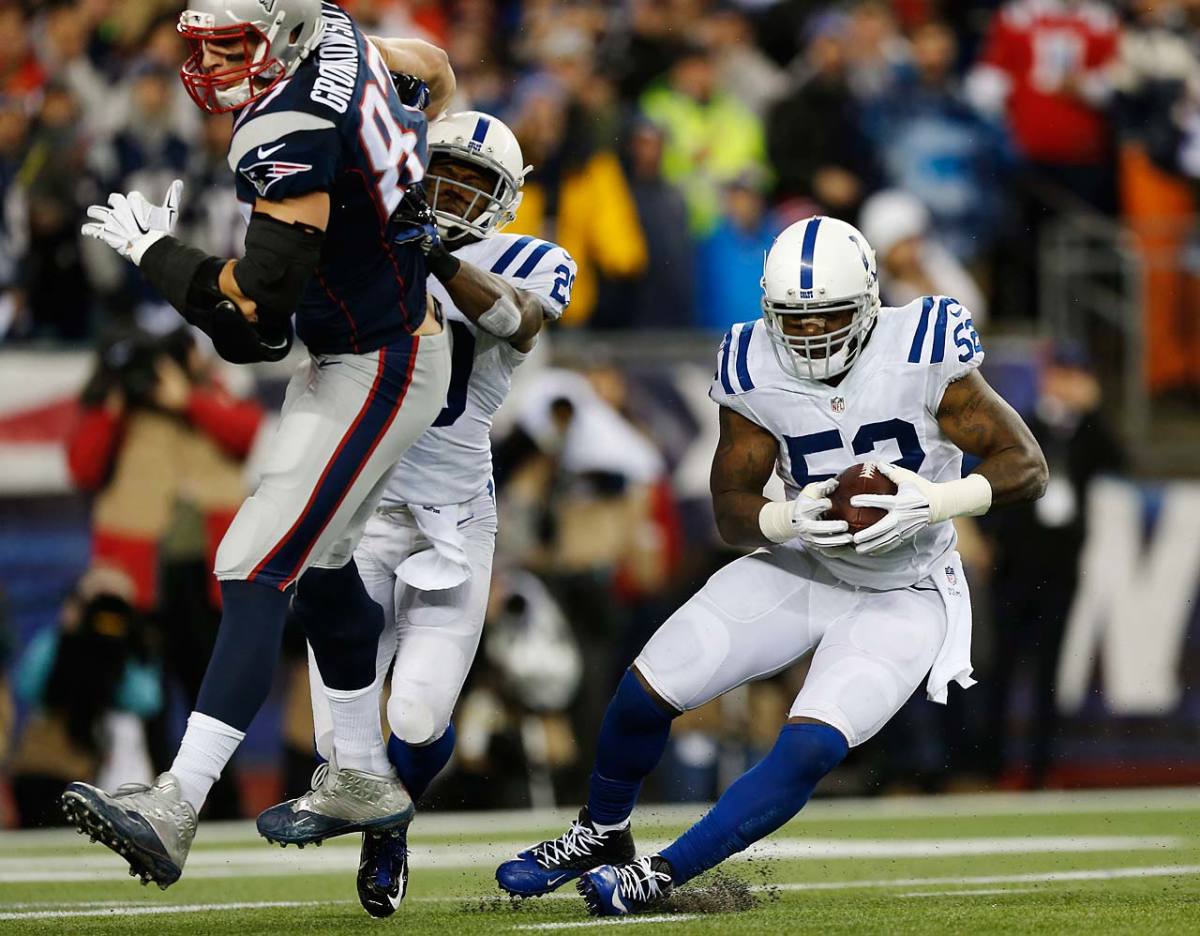
Indianapolis Colts inside linebacker D'Qwell Jackson intercepts a pass intended for Rob Gronkowski during the first half.
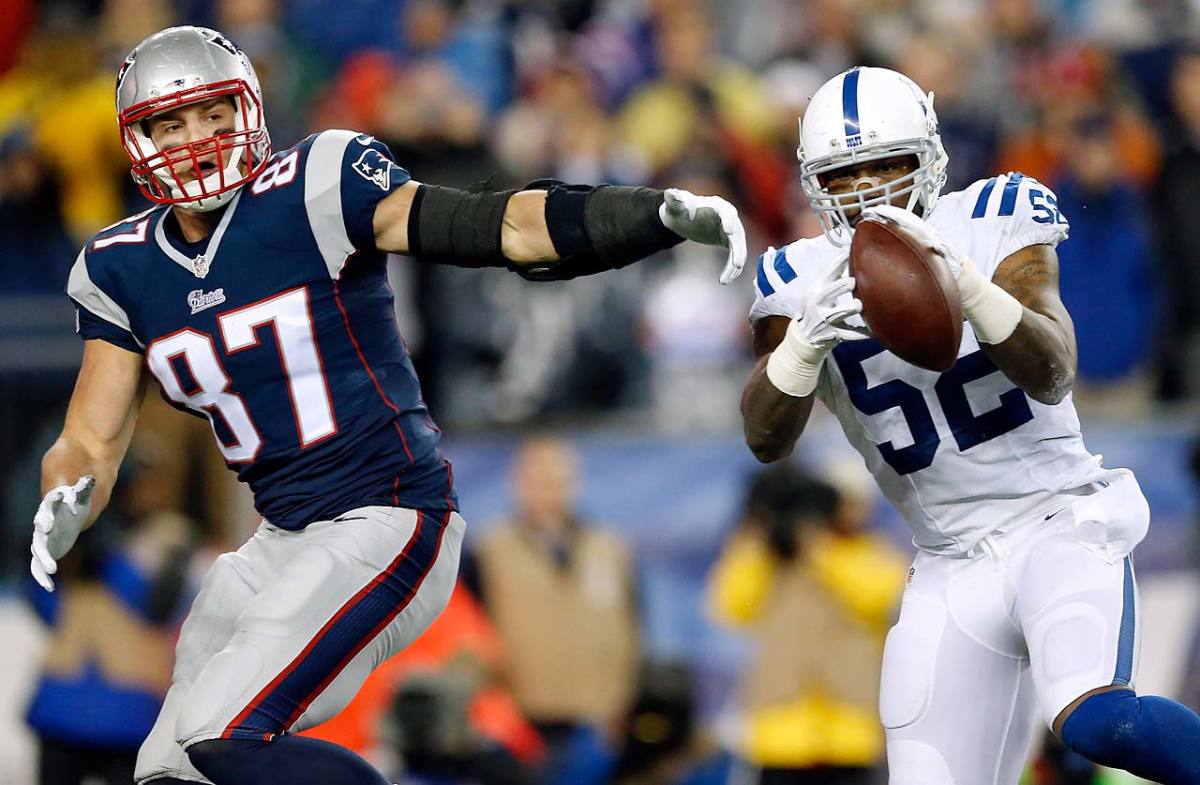
D'Qwell Jackson intercepts a pass intended for Rob Gronkowski.
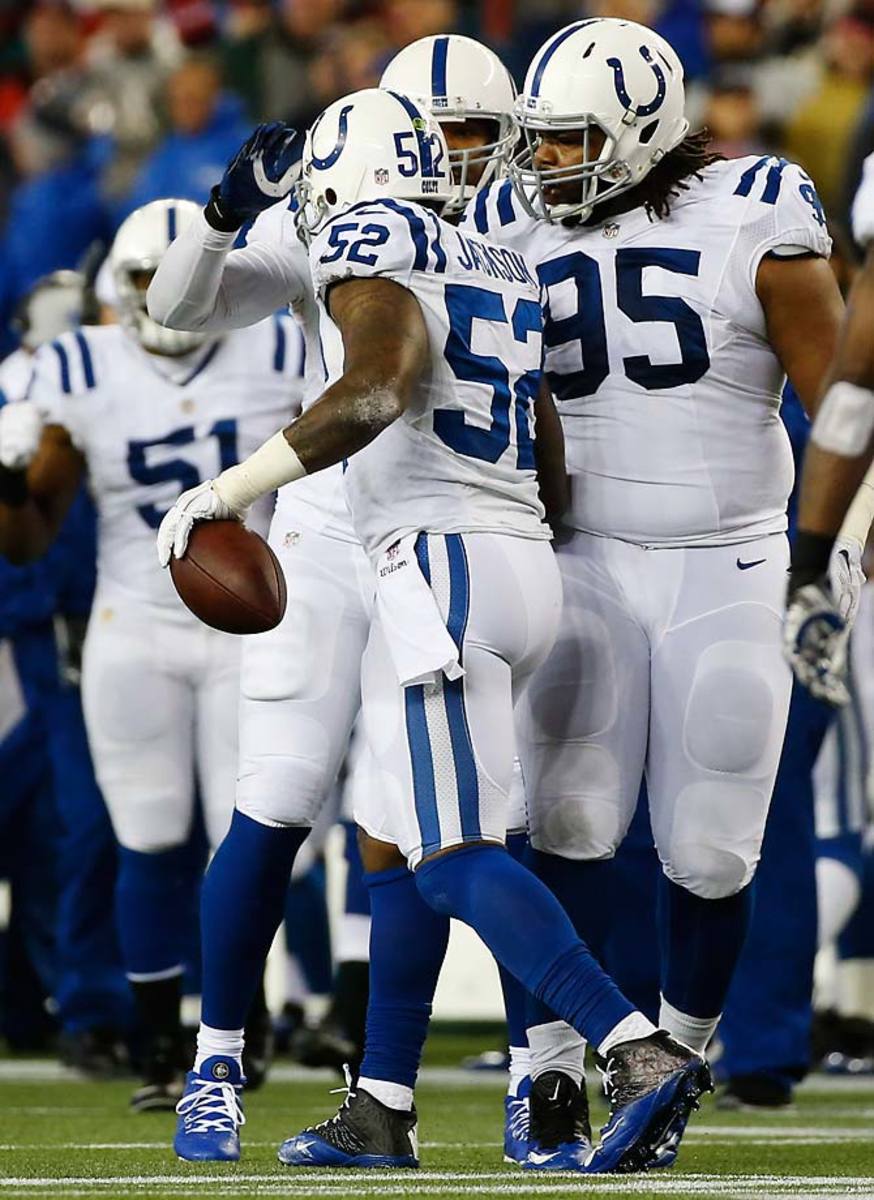
D'Qwell Jackson is congratulated by teammates after his interception.
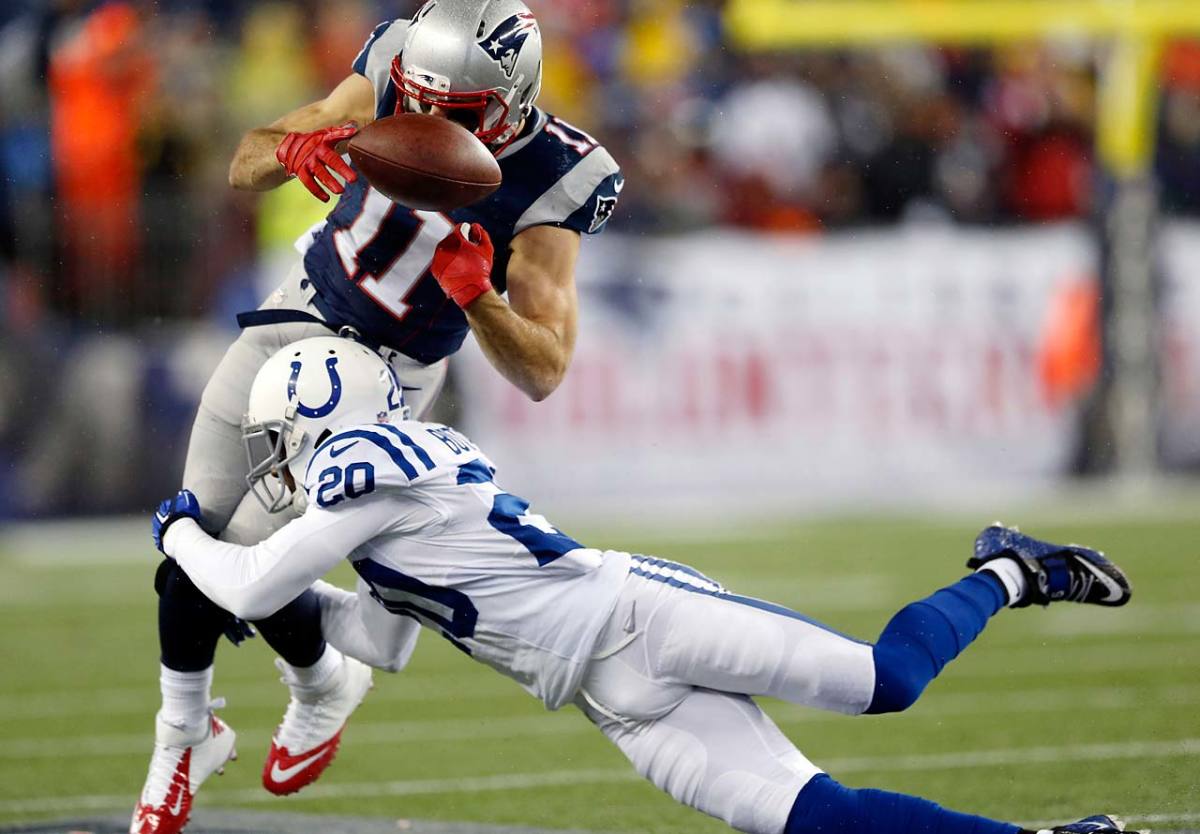
Julian Edelman is tackled by cornerback Darius Butler during the first half.
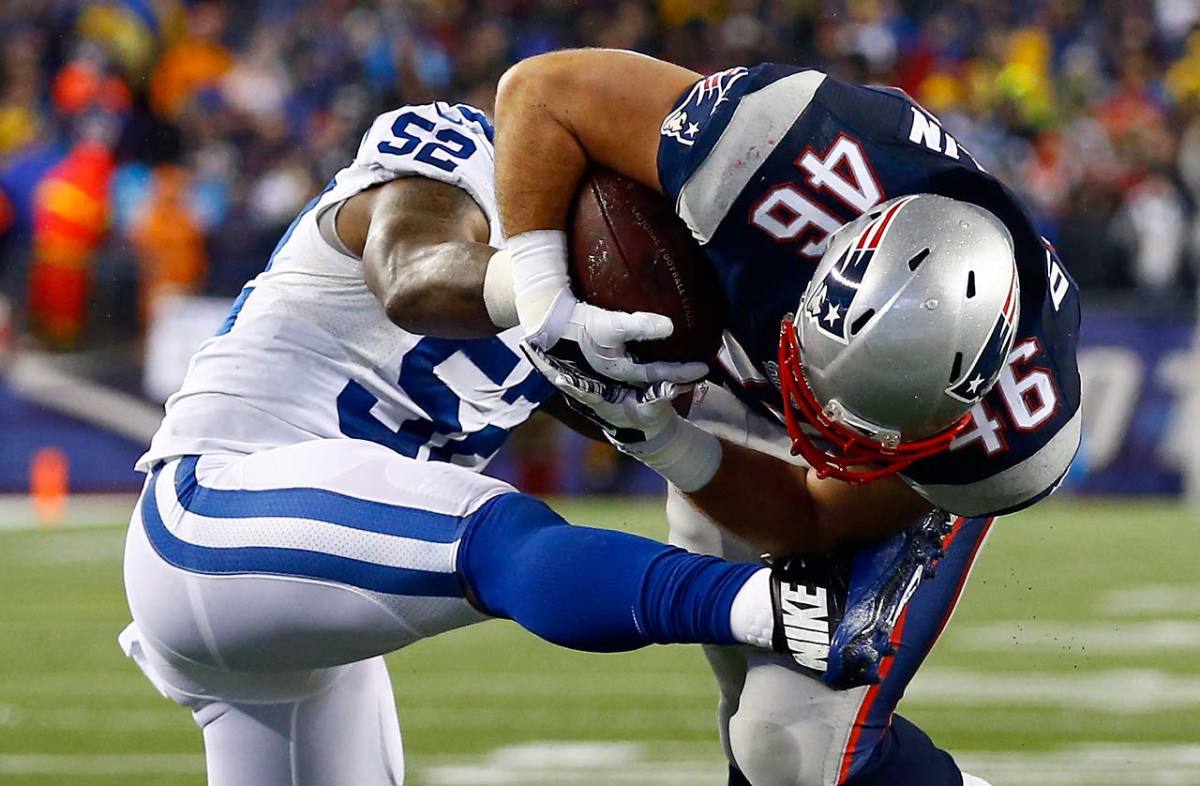
James Develin scores a touchdown in the first quarter.
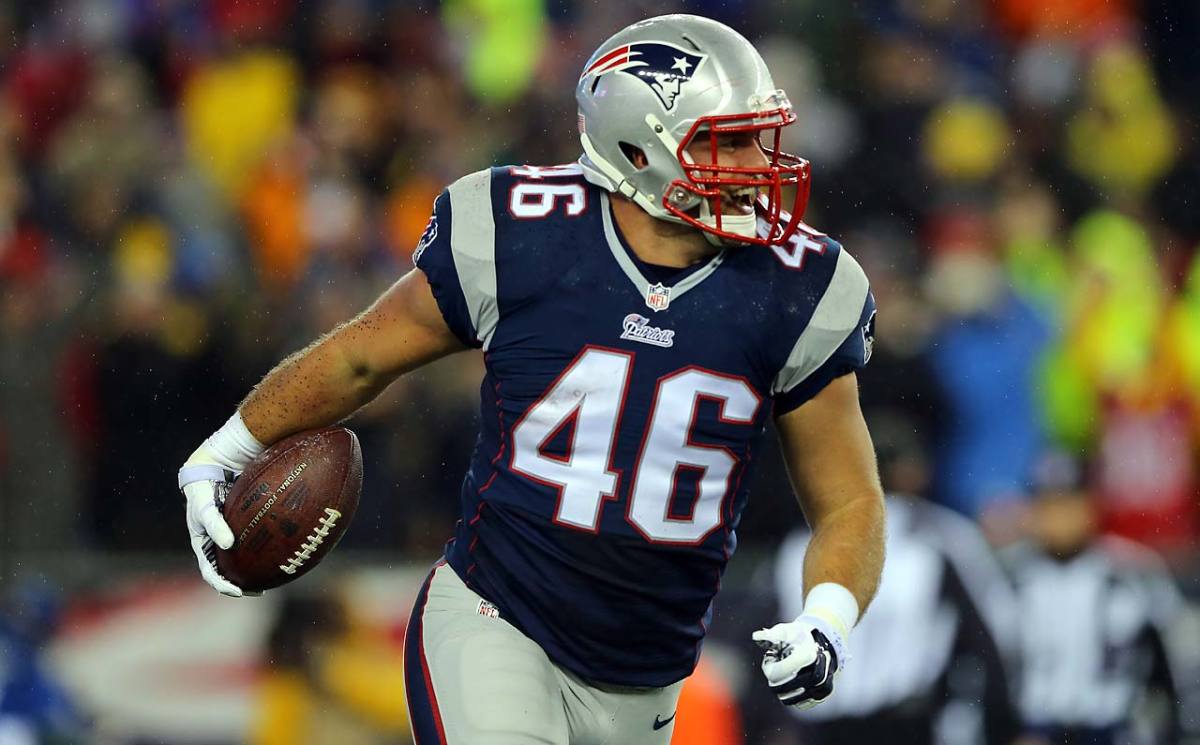
James Develin celebrates his first-quarter touchdown.
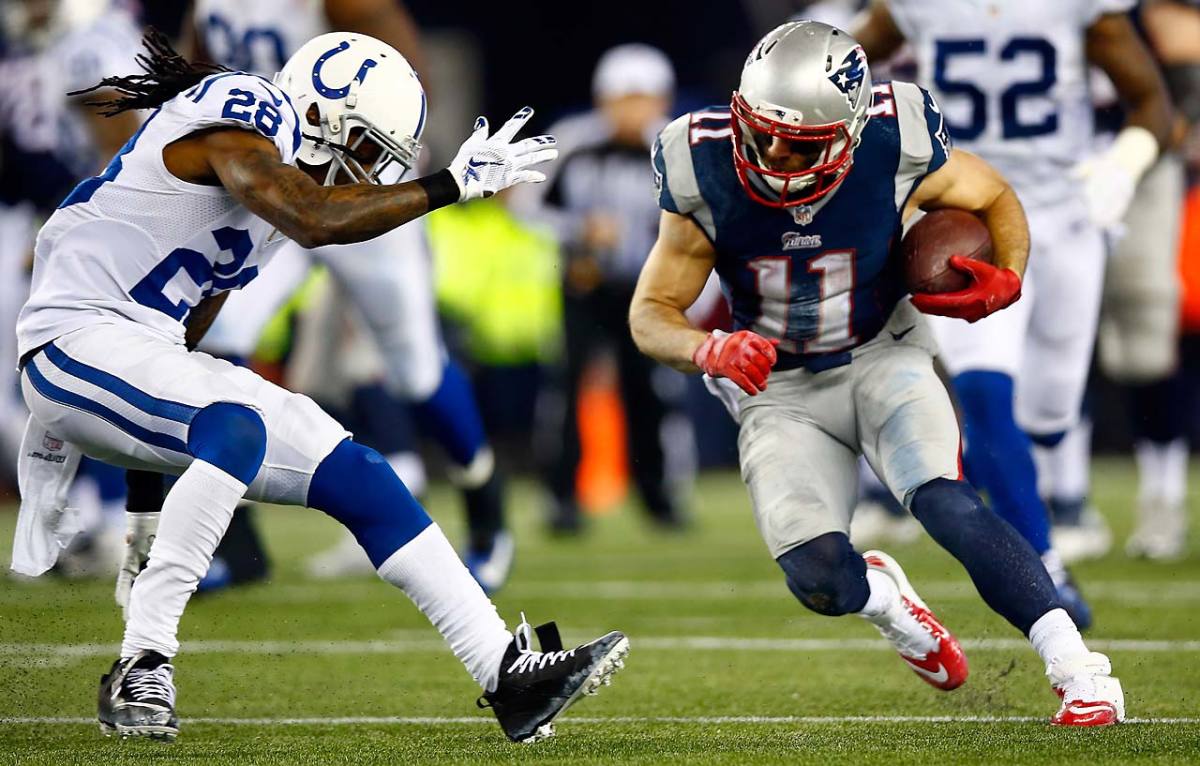
Julian Edelman runs with the ball against Greg Toler.
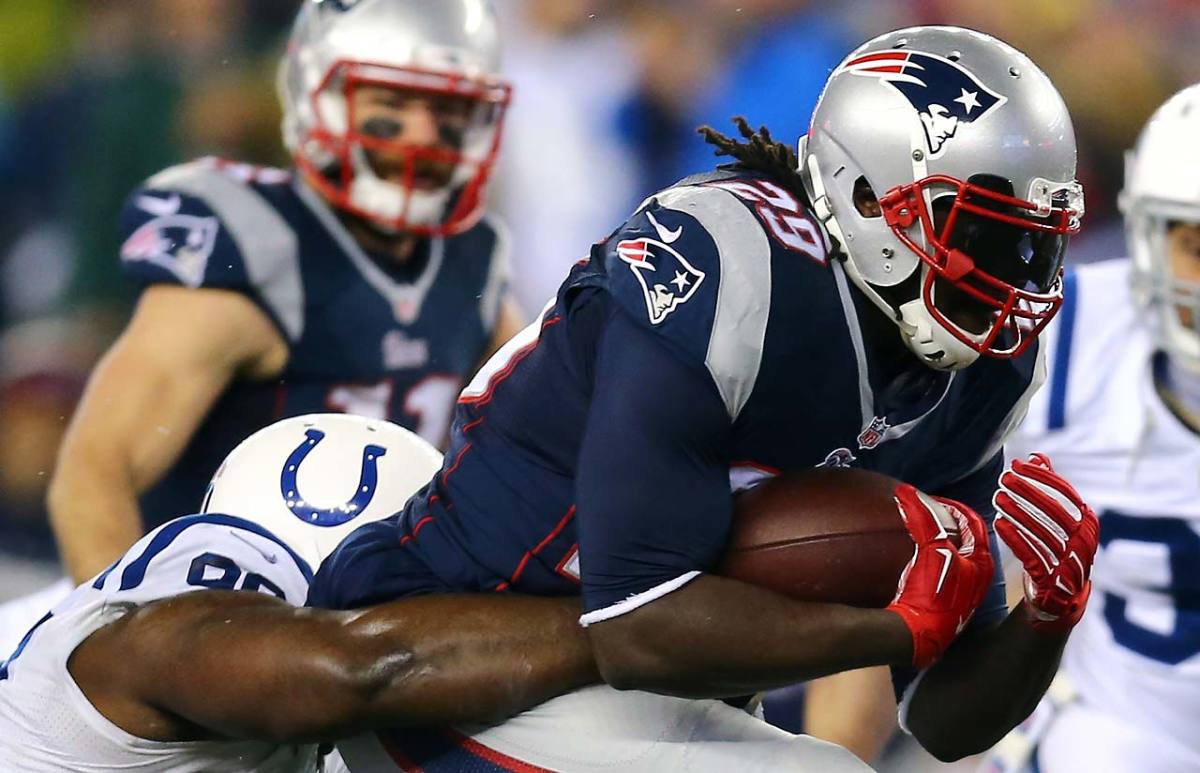
LeGarrette Blount runs with the ball in the first quarter.
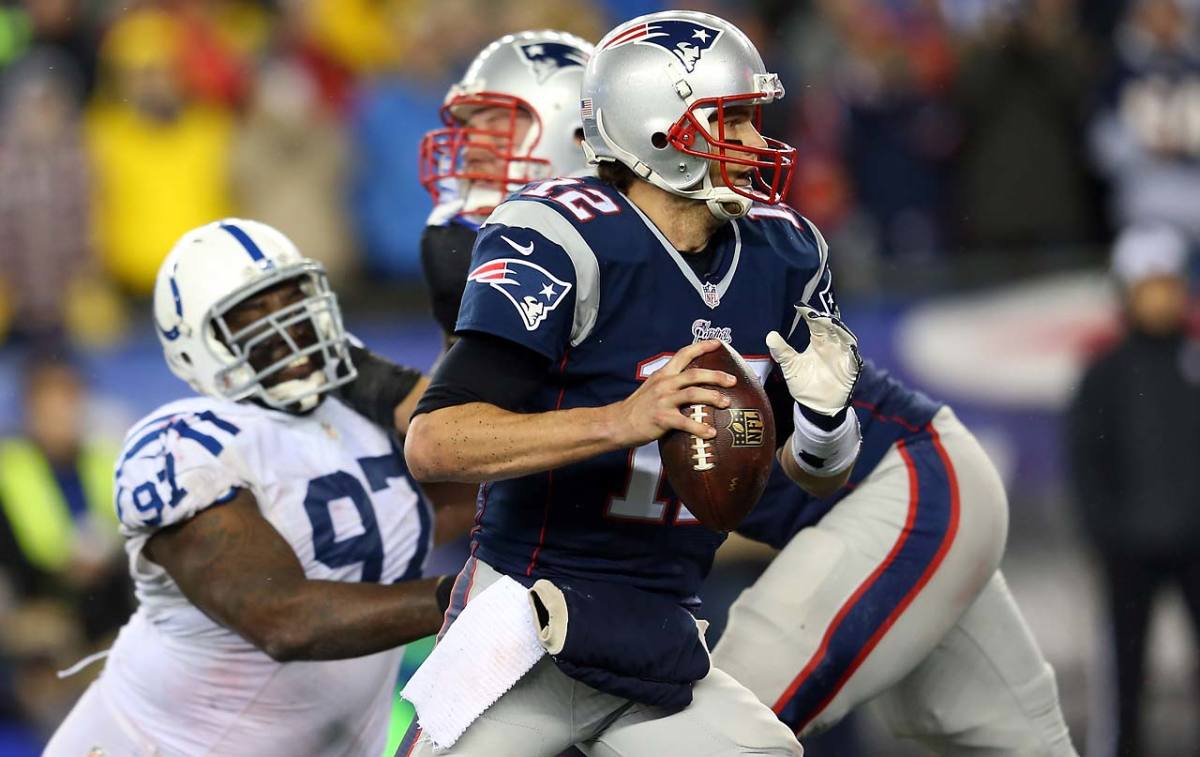
Tom Brady looks to pass in the first half against the Colts.
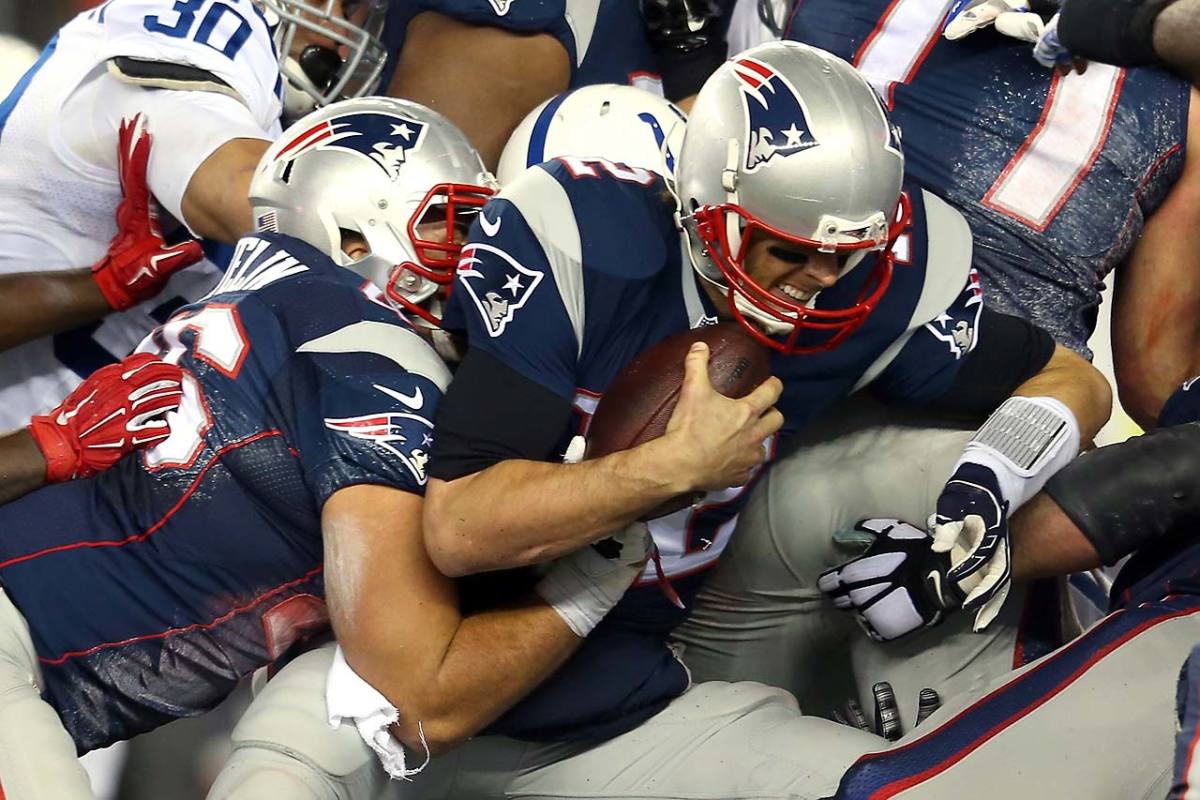
Tom Brady runs for a first down in the second quarter.
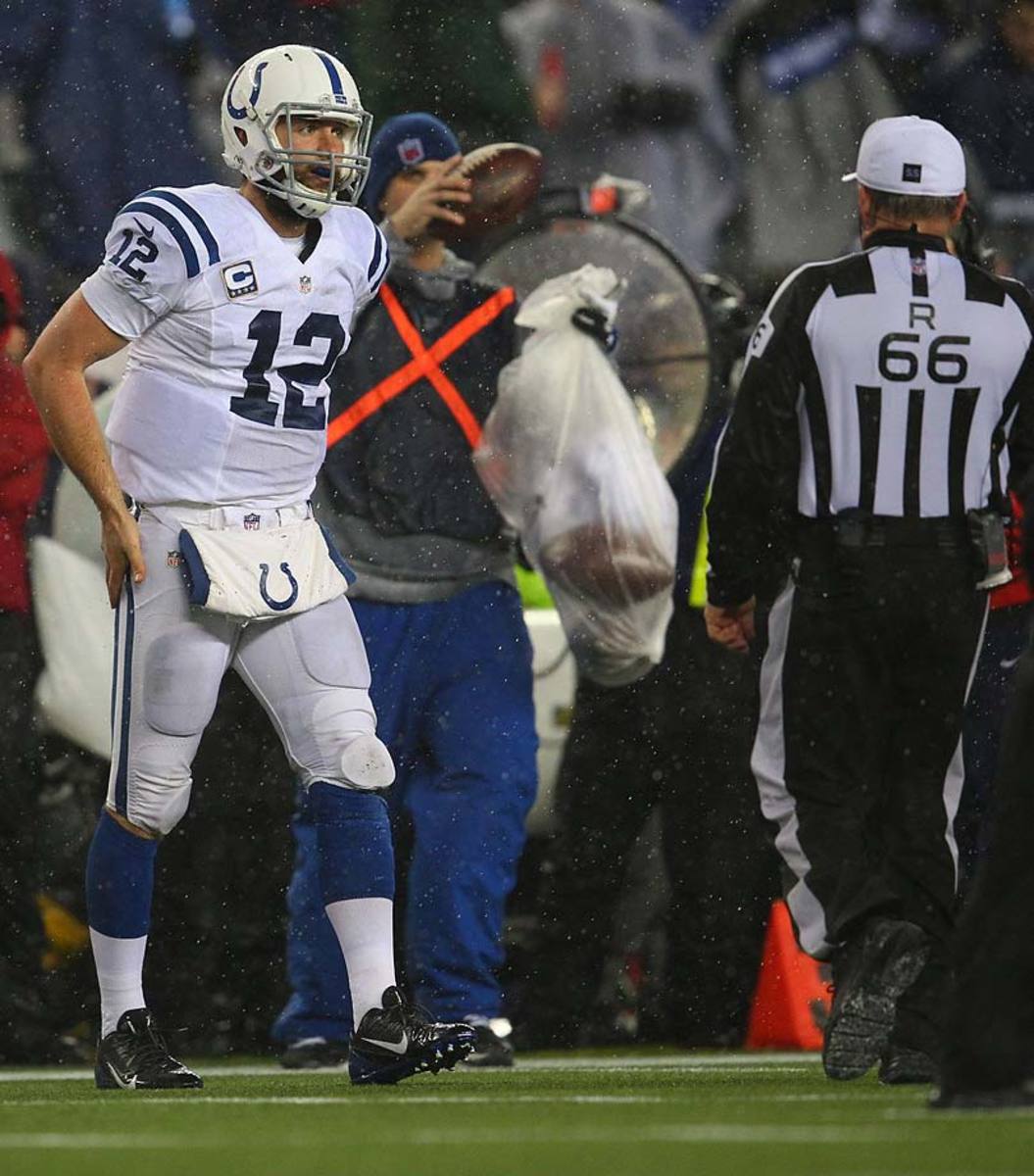
An official has a ball handed to him during the AFC title game.
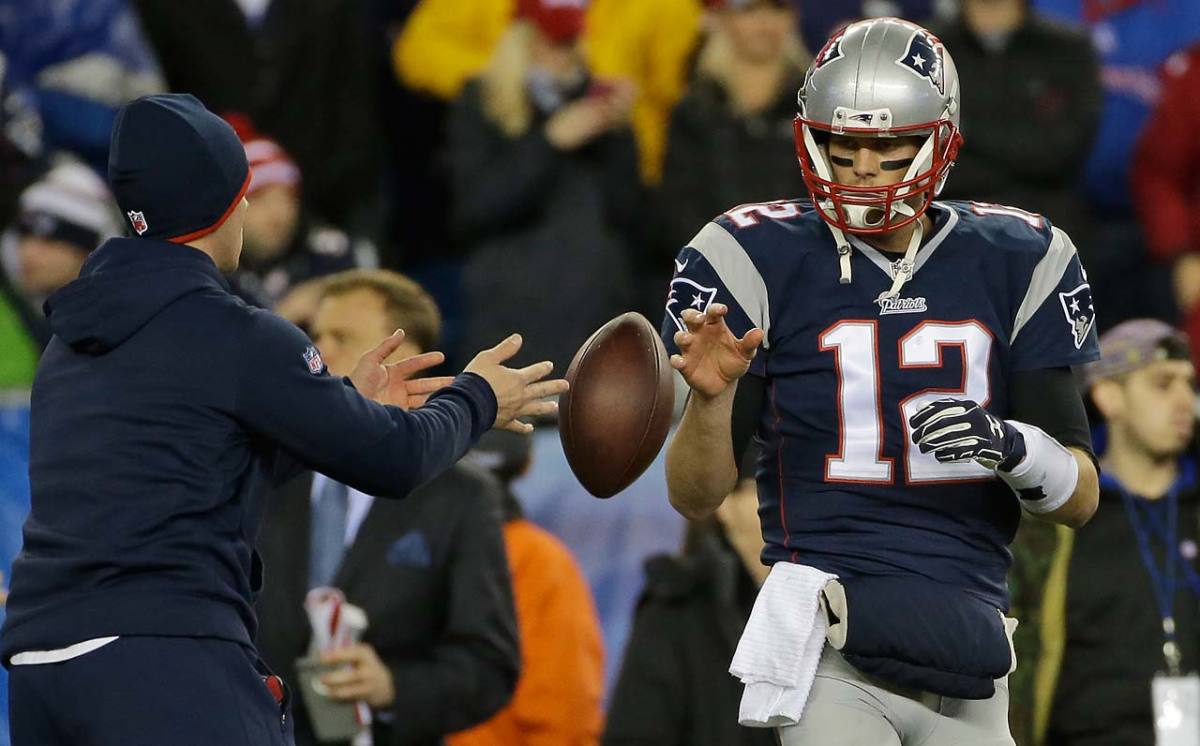
Tom Brady has a ball tossed to him during warmups before the AFC Championship game.
